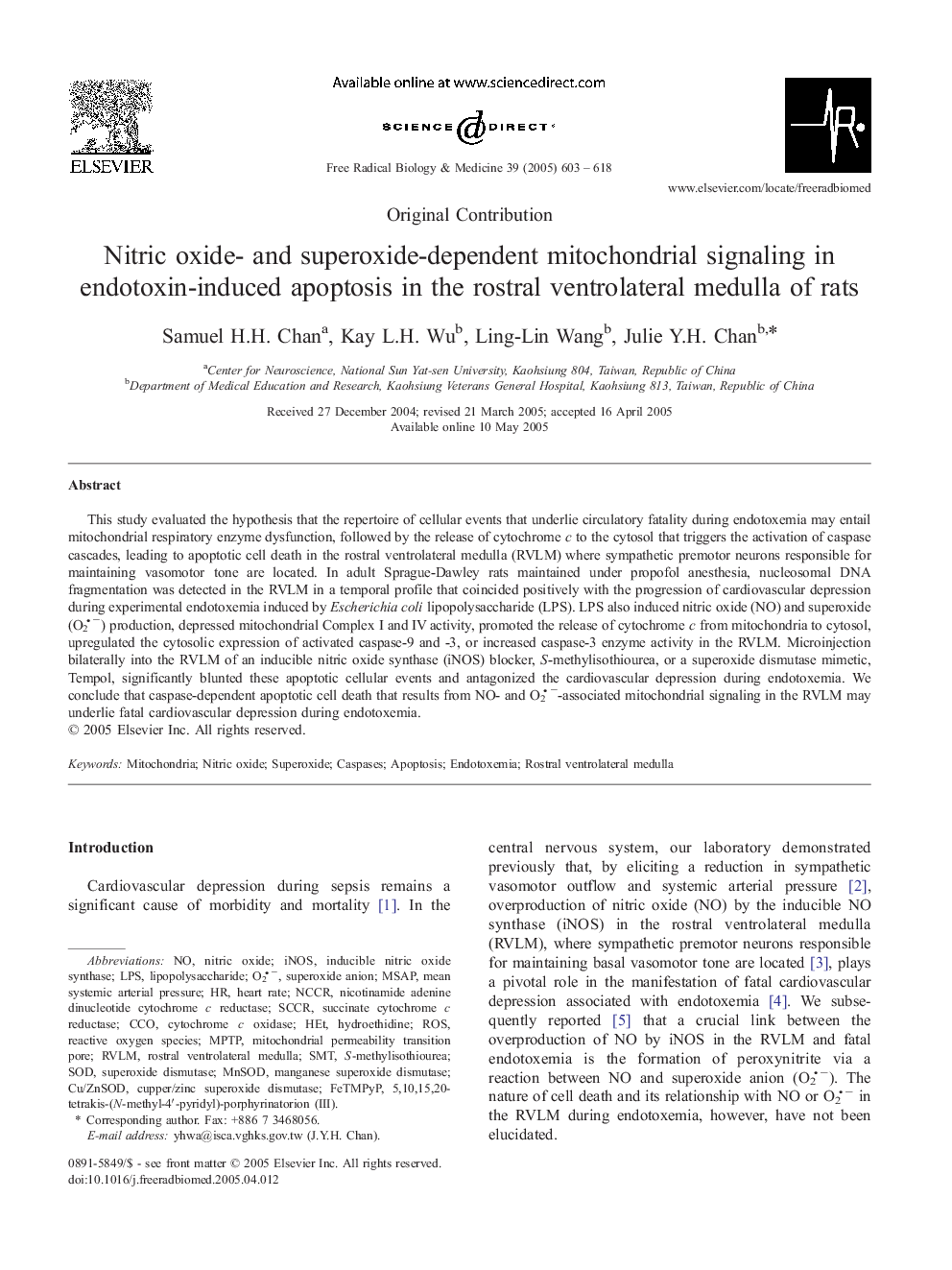| Article ID | Journal | Published Year | Pages | File Type |
|---|---|---|---|---|
| 10739258 | Free Radical Biology and Medicine | 2005 | 16 Pages |
Abstract
This study evaluated the hypothesis that the repertoire of cellular events that underlie circulatory fatality during endotoxemia may entail mitochondrial respiratory enzyme dysfunction, followed by the release of cytochrome c to the cytosol that triggers the activation of caspase cascades, leading to apoptotic cell death in the rostral ventrolateral medulla (RVLM) where sympathetic premotor neurons responsible for maintaining vasomotor tone are located. In adult Sprague-Dawley rats maintained under propofol anesthesia, nucleosomal DNA fragmentation was detected in the RVLM in a temporal profile that coincided positively with the progression of cardiovascular depression during experimental endotoxemia induced by Escherichia coli lipopolysaccharide (LPS). LPS also induced nitric oxide (NO) and superoxide (O2â) production, depressed mitochondrial Complex I and IV activity, promoted the release of cytochrome c from mitochondria to cytosol, upregulated the cytosolic expression of activated caspase-9 and -3, or increased caspase-3 enzyme activity in the RVLM. Microinjection bilaterally into the RVLM of an inducible nitric oxide synthase (iNOS) blocker, S-methylisothiourea, or a superoxide dismutase mimetic, Tempol, significantly blunted these apoptotic cellular events and antagonized the cardiovascular depression during endotoxemia. We conclude that caspase-dependent apoptotic cell death that results from NO- and O2â-associated mitochondrial signaling in the RVLM may underlie fatal cardiovascular depression during endotoxemia.
Keywords
MPTPLPSsuccinate cytochrome c reductaseFeTMPyPSMTCCOMSAPMnSODiNOSNCCRRVLMHETO2−ROSS-methylisothiourearostral ventrolateral medullasuperoxide anionmitochondrial permeability transition poreEndotoxemiamean systemic arterial pressureApoptosisSODinducible nitric oxide synthaseSuperoxidemanganese superoxide dismutaseSuperoxide dismutasecytochrome c oxidaseSCCRHeart ratelipopolysaccharideCu/ZnSODMitochondriaNitric oxideHydroethidineCaspasesReactive oxygen species
Related Topics
Life Sciences
Biochemistry, Genetics and Molecular Biology
Ageing
Authors
Samuel H.H. Chan, Kay L.H. Wu, Ling-Lin Wang, Julie Y.H. Chan,
